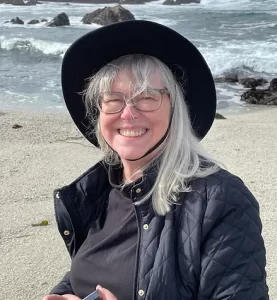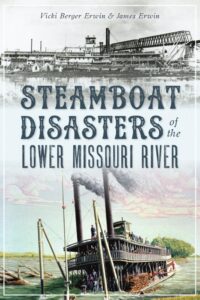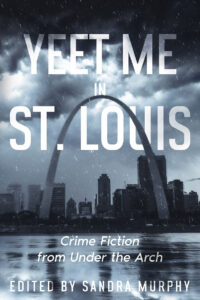 by Vicki Berger Erwin
by Vicki Berger Erwin
Not only do I have a co-author for the nonfiction I write, it’s my husband. We’ve been married a long time, we’ve written several successful books together, and we’re still married—happily. Admittedly, I started the process slowly. I wrote twenty plus books alone, wrote a book with a photographer, co-wrote one with a friend, one with my son, then…
I enjoyed a long career in the book business, but my husband didn’t start writing, outside of his job, until he retired. He spoke at an engagement in Arkansas for his first Civil War title and I went along. Speakers included Charles and Caroline Todd, a mother-son team, who spoke about writing together. On the drive home, I said, “We could do that,” meaning write together. We came up with an idea for a mystery novel set during the Civil War and brainstormed all the way home. Then, we wrote. I’d write a section. Jim wrote a section. Neither of us wrote in order, nor had we completely planned out the plot. Unfortunately, the sections never meshed, but it was good practice, and we learned something important. Divide and conquer.
 Years ago, on a weekend trip to Hannibal, Missouri, we stopped in at an exhibit of a boat that sank in the Missouri River in the mid-nineteenth century and had been excavated. It was the Arabia steamboat—a fascinating story—one told in a book by one of the salvagers and in the Arabia Steamboat Museum in Kansas City, Missouri. On the way out of the exhibit, we found maps locating every steamboat that sank in the river during the height of river transport and travel—there were hundreds. I commented that it would be interesting to write a book telling the stories of the sunken boats. Remember the “years ago” comment at the beginning? This was before the internet, or at least developed and readily available internet. We also worked full-time. We shelved the idea, pulling it out now and then, usually when we ran across the maps.
Years ago, on a weekend trip to Hannibal, Missouri, we stopped in at an exhibit of a boat that sank in the Missouri River in the mid-nineteenth century and had been excavated. It was the Arabia steamboat—a fascinating story—one told in a book by one of the salvagers and in the Arabia Steamboat Museum in Kansas City, Missouri. On the way out of the exhibit, we found maps locating every steamboat that sank in the river during the height of river transport and travel—there were hundreds. I commented that it would be interesting to write a book telling the stories of the sunken boats. Remember the “years ago” comment at the beginning? This was before the internet, or at least developed and readily available internet. We also worked full-time. We shelved the idea, pulling it out now and then, usually when we ran across the maps.
After a visit to the full Arabia museum, we became fired up about the idea again. We purchased more of the maps at the museum and pored over them. We had good internet by then for researching, rather than traveling to the sites to gather information although we did that, too.
During our preliminary research, different boats and types of disasters appealed to each of us. We divided the boats and the categories we wanted to pursue further. We dug in, shared info back and forth, “I found this on the Saluda, one of the worst disasters along the Missouri” or “Here’s a great article about how the 1843 St. Louis fire started on a steamboat” and yes, that’s the Mississippi, but they are too interconnected to ignore.
After drafting our individual parts, we integrated, truly one of the hardest parts, read, and rewrote one another’s work, and attempted to make it sound as if one person wrote the book. We don’t read each other’s work until we finished writing, unless one or the other asked a question. Jim usually does the index; I do the bibliography. It’s a partnership.
We followed the same format in the next two books we wrote together: divide and conquer. The book we’re working on now hasn’t been as easy. The division was easy. It’s about Julia Dent Grant and Ulysses S. Grant in St. Louis. I do Julia; Jim takes Ulysses, yes? However, the difficulty arises when their stories overlap. We want to eliminate repetition. We’re working to mesh the parts now. The book is due in two weeks. The house is dusty; the floors need vacuuming; the dog wants attention, but sorry, we’re busy.
We found many advantages to working with a co-author. It’s a built-in critique group. There’s someone well-versed in the topic to discuss questions. We don’t even mind listening to the adjacent information we discover along the way, because it’s a mutual topic of interest. We share research and other duties like index and bibliography. The amount of writing each of us does is less because it’s divided, maybe not always evenly, but close. It’s also possible to pass the elements we find boring on to our partner. When proofreading, there are two sets of eyes, so hopefully one person will catch errors if the other doesn’t. Occasionally, one or the other of us has a great idea we share that raises the work to a new level. We have a travel partner when research requires it, share visits to historic sites, and research libraries. Talking to experts is one of the best parts of the experience. Okay, we’re nerds.
We also share promotion duties.
 Jim loves to go out and talk to groups about historical topics. I like it less. We do events together, but we also do them separately. Sometimes, and we’re not sure why, a person or group will contact only one of us, even though we’re both listed as authors. For example, Jim was an “expert” on an episode of Beyond the Curse of Oak Island on the History Channel that covered the Arabia excavation. Sigh. I missed my fifteen seconds of stardom.
Jim loves to go out and talk to groups about historical topics. I like it less. We do events together, but we also do them separately. Sometimes, and we’re not sure why, a person or group will contact only one of us, even though we’re both listed as authors. For example, Jim was an “expert” on an episode of Beyond the Curse of Oak Island on the History Channel that covered the Arabia excavation. Sigh. I missed my fifteen seconds of stardom.
I was contacted by a TV producer interested in crime in Missouri. We had several meetings before COVID and that ended that, but not before I learned something about how developing a TV show goes. I’ve been on podcasts and invited to interview nationally-known true crime authors in conversation at library events. All of that grew out of books we wrote together, but only one of us was invited to participate.
For me, co-authoring has been an enriching experience. We learn from one another, not only facts but different techniques of researching and writing. Jim researches a section at a time, writing as he goes along. I research the entire project, then write. I go back to fill in questions or things I may have forgotten. I take copious notes as I research, Jim not so much. That isn’t what matters. It’s the final outcome that’s important not how we end up there.
Excuse me for cutting this short, but an editor is waiting for Ulysses and Julia Grant’s Missouri Love Story (coming in 2025 from The History Press).
Vicki Berger Erwin had a varied career in the book industry beside writing over thirty titles including middle grade mysteries, YA, true crime, and popular history. She also worked in a library, bookstores, was a sale rep for a major publisher, and ultimately owned an independent bookstore, her dream job. Steamboat Disasters of the Lower Missouri River, co-authored James W. Erwin, was published by The History Press. Vicki’s first short story, “Magpie Baby,” appears in the anthology, Yeet Me in St. Louis: Crime Fiction from Under the Arch, published by White City Press, an imprint of Misti Media.
